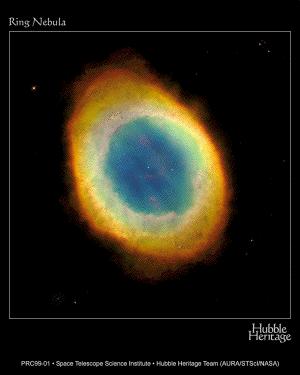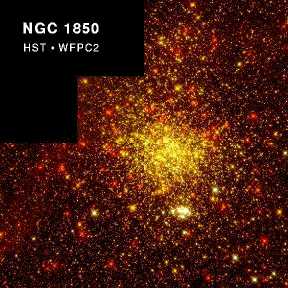
A Window To The Universe
The Hubble Space Telescope Goes to the Deep South
On
a pioneering mission, NASA's Hubble Space Telescope turned her penetrating eyes
towards the southern skies to peer down a 12 billion light-year long abyss of
dazzling and undiscovered treasures of the galaxies. The 10-day observation project,
launched in October 1998, called Hubble Deep Field South (HDF-S)., is designed
to map the far-flung galaxies and aid astronomers in deciphering the history,
secrets and splendor of the universe.
The first stage of this exploration, Hubble Deep Field North (HDF-N) was launched in 1995 and was aimed north towards the small patch of space around the Big Dipper. The target was in the constellation Tucana, in approximately the space surrounding the south celestial pole. A team of astronomers at the Space Telescope Science Institute (STScI) in Baltimore, MD and NASA's Goddard Space Flight Center, Greenbelt, MD, USA carried out HDF-S.
According to STScI astronomer, Robert Williams, the southern skyline and the deep field will be intensely studied over the next 5-10 years. The two deep fields (north and south) will provide the astronomers with core samples of the universe for analysis and promote a better understanding of the history of the cosmos. The new deep field study will also provide an astronomical gold mine for some powerful new ground based telescopes to be located in the Southern Hemisphere that will undertake follow-up observations of the galaxies and also measure their distances.
All of the Hubble's equipment is set up and run at the same time during each observation. For example, the Space Telescope Imaging Spectrograph was used to dissect light from a bright, active core of a distant galaxy captured in its field of view, otherwise known as a quasar. The light from this distant quasar traveled approximately three-quarters of the way across the universe. This distant light provides a powerful three-dimensional probe of the universe's invisible structure and design. There are numerous invisible clouds of primeval hydrogen gas that fill the space across the billions of light years between this quasar and earth. These clouds of gases can be identified and detected through an analysis of the light that emerges from a quasar. These hydrogen clouds are also a key element in understanding the light emitted from quasars. The light emitted from quasars is an incredibly powerful stellar searchlight that easily cuts right through this cosmic fog.
This Hubble project's key element was the method used for observation. Various observation strategies were used to pinpoint the galaxies and measure their distances. The astronomers had to tackle different ideas, concepts and scenarios for each experimental observation. For example, what kind of filters or gratings must be used for each instrument? What are the different exposure times for each filter or grating? Detailed examination of the instrument setup and observation parameters and protocols also played an important role in determining and defining the location of the various galaxies observed. The use of light was also an important factor. In previous observations, it was found that scattered earthlight increased the sky background in certain bandpasses on the dayside of the orbit. Therefore, the observations needed to be tailored in such a way that all the instruments were allowed to make optimal use of the bright and dark time.
Through
numerous observations and experiments, the HST successfully mapped out several
regions in the black abyss of space. With its onboard state of the art equipment,
the HST produced incredible images, and in the process, discovered much about
our unknown and still growing universe. At the beginning of 1999, the HST captured
the sharpest view of one of the most famous of all planetary nebulae: The Ring
Nebula.

The
Hubble telescope peered down what looked like a barrel of gas emitted by a star
dying thousands of years ago. The elongated clumps of dark material embedded
in the gas around the edge of the nebula are the dying central star, suspended
and floating in a blue fury of hot gas. The nebula was measured to be approximately
a light year in diameter and was located two thousand light years away from
Earth, near the constellation Lyra. The colors exhibited are approximately true
colors and were taken through 3 different color filters with the HST's WFPC2
(Wide Field Planetary Camera 2). The hot helium at the center of the star caused
the isolated explosions of blue. The ionizing oxygen at the edge of the star
caused the green shades. The reds identified the ionizing nitrogen radiated
from the coolest gas located farthest away from the star. The different shades
and colors of the different gases are indicative of their being immersed in
ultraviolet radiation that is emanating from the remnants of the central star.
One
of the main discoveries from the Hubble Deep Field South was the infrared and
Visible Light Galaxies. The galaxies that responded to infrared light were found
to emanate a red glow, while the galaxies that reacted to visible light emitted
a bright shade of blue.

Some
of the brightest objects in the HST's field of view are the foreground stars
that form the halo of the Milky Way Galaxy. Astronomers can identify the shapes
and ages of galaxies by comparing different views obtained using infrared and
visible light filters. Scientists discovered that variation in stellar brightness
is probably due to the fact that most of the galaxies are probably "dusty",
or contain old stars that are simply very, very far away. Several red galaxies
in the field have colors and the smooth, symmetric shapes distinctive of very
old elliptical galaxies.
Using a combination of observations and analysis, astronomers found that the existence of such objects in the early universe, as well as their numbers, indicates the possible upper numerical limit set during the time when the earliest galaxies were being formed. The colors, shapes and sizes of the galaxies are similar in infrared and visible light. This finding suggests that older and younger stars within distant galaxies have intermingled.
The
birth of a star is one of the most fascinating discoveries of the HST. By penetrating
the swirls of dust clouds that surround the centers of these galaxies, the telescope's
infrared vision captured a fresh new view of a star's birth.

The
color of the glow emanating from a star depends on the kind of material contained
within it. A red glow corresponds to hydrogen gas, the gas that also outlines
the curving spiral arms of galaxies. The gases glow because they are undergoing
severe ultraviolet radiation from active galactic nuclei (AGN), and from the
birth of young, massive stars. The AGN themselves are powered by enlarged black
holes. White light is only emitted from middle aged stars. Because of their
dense concentration, a cluster of stars will cause the cores of galaxies to
be mostly white. All the dark material seen in the image is dust.
One of HST'S first discoveries was a secret star birthplace. In 1994, scientists discovered a pair of clusters 166,000 light years away in the Large Magellanic Cloud (LMC). The LMC is located around the southern constellation of Doradus. It was noticed that this cluster pair was unusually close together for two distinct and separate objects. Since the LMC lies outside of the Milky Way Galaxy, the scientists and astronomers believed it would provide a natural laboratory for studying the birth and evolution of stars. The stars in the LMC were found to contain a few heavy elements, and from this it could be ascertained that their composition was primordial -- like the stars first formed in the early universe.
Dr. Nino Panagia of the Space Telescope Science Institute (STScI) in Baltimore, Maryland and the European Space Agency (ESA) said that preliminary examinations of these HST observations indicated that this compact cluster contains more massive stars than was expected. However if this were true, the entire history of the early universe would have to be drastically altered.
To help resolve this dilemma, Panagia and Dr. R. Gilmozzi (also of STScI/ESA) utilized the HST'S unique capabilities, such as its ultraviolet sensitivity, faint star detection, and high resolution, to identify three different populations in a concentration of 10,000 stars. About 60% of the stars belonged to a cluster that was estimated to be approximately 50 million years old. Another 20% of the clusters were loosely distributed and contained extremely hot and massive stars that were in the region of 4 million years old. The significant age difference between the two clusters suggested that these were actually two very separate star groups that happened to lie in the same line of sight.
According to Panagia, the younger scattered cluster probably lies approximately 200 light years beyond the older one. This unusual juxtaposition suggests that the two have an evolutionary connection. One of the theories proposed was that an expanding bubble of hot gas, from thousands of supernova explosions in the older cluster, triggered the birth of the younger cluster. The bubble would have expanded through space for 45 million years before colliding with a wall of cool gasses and dust. The difference in temperatures would have caused a shock wave whose front would have contracted the gasses, thus precipitating a new generation of star formation. In a few years, these old stars will explode (go supernova) and create a new bubble of expanding hot gas.
The
most recent discovery of the HST was on the 1st of April 1999. It
is called Hodge 301. This is a cluster of brilliant and massive stars that sit
right in the center of the most violent starburst region of our local universe.
This highly active region in called the Tarantula Nebula and it is located in
our nearest galactic neighbor, the Large Magellanic Cloud.

Many
of the stars in Hodge 301 are so old that they have already exploded in supernovae.
The massive explosions blast material out into the surrounding region of space
at speeds up to 300 miles per second. The high-speed ejections plough into the
Tarantula Nebula and the changes in temperature and pressure causes a shock
wave that shreds the gas into a multitude of sheets and filaments. Three stars,
referred to as supergiants, were spotted in Hodge 301. A supergiant is star
that is close to its final evolutionary stage and is about to go supernova.
The eventual explosions from these three supergiants will send even more shock
waves into the Tarantula Nebula.
In addition, the HST also discovered small images at the center of the Tarantula Nebula. They were small, dense globules of gas and dusts that have spiraled into columns. These will later become the birthplace for new stars, some of which are already being formed today. They will then assume their place in the ongoing formation of new stars, and ultimately, end in their own explosive and fiery deaths.
As galaxies are born and as stars explode into supernovae, all the mysteries, secrets and history of the universe lie before us. Through more research, careful analysis, experimentation and investigation, like that using the Hubble Space Telescope, we can finally begin to map our universe in all its magnificent splendor.
Copyright 1999, Lavinia Ponniah, All Rights Reserved
21st, The VXM Network, https://vxm.com